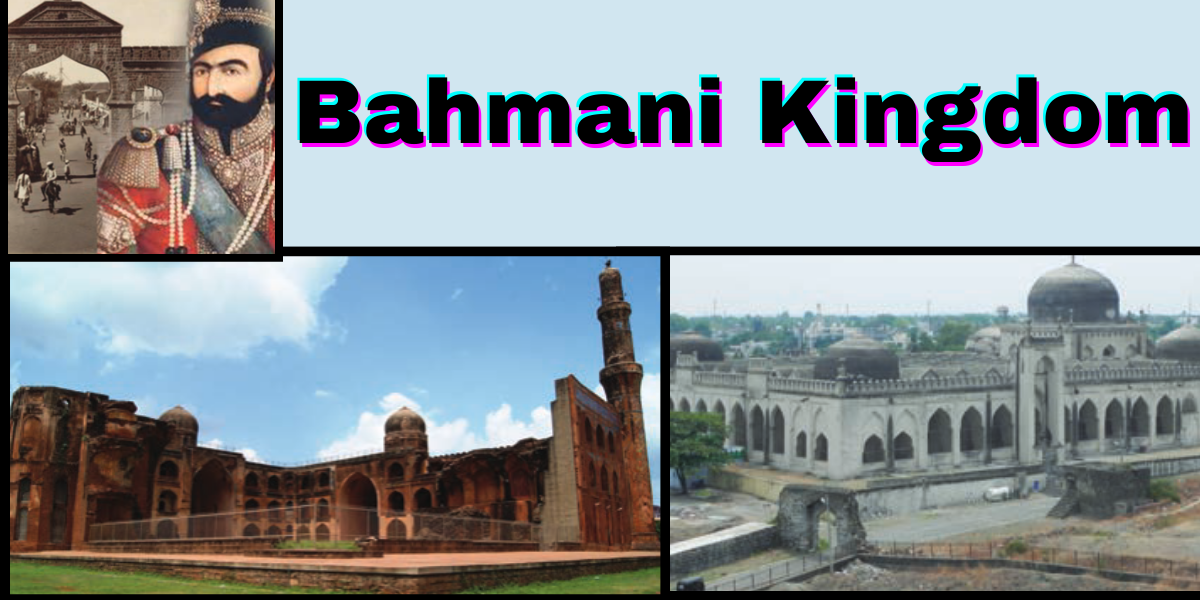
TOPIC 3.5 BAHMANI KINGDOM
The Bahmani kingdom of Deccan was founded by Hasan Gangu, whose original name was Ismail Mukh. The capital was Gulbarga. Hasan Gangu took the title of Alauddin Hasan Bahaman Shah (AD 1347-58) and became the first king of Bahamani in AD 1347.
At the time of his death, his dominion had four provinces-Gulbarga, Daulatabad, Berar and Bidar
Mahmud Shah I (1358-75) son of Bahaman Shah, established a council consisting of eight ministers and decentralised his provincial administration. He fought with Vijayanagara. He was succeeded by his son Ala-ud-din Mujahid Shah.
Firoz Shah (1397-1422) was the most remarkable figure in the Bahmani kingdom. He was determined to make Deccan the cultural centre of India. He inducted Hindus in his administration to a large extent. He built an observatory at Daulatabad. He founded the city of Firozabad on the bank of the river Bhima. Firoz defeated Devaraya I.
Firoz Shah was succeeded by his brother Ahmed Shah I (AD 1422-36). He shifted his capital from Gulbarga to Bidar.
Ahmed Shah is known as Wali or saint, due to his association with Gesudaraz
Inlaying zinc with silver and gold, Bidri ware was introduced in his period.
The Bahmani Sultanate, also known as the Bahmani Empire, was a mediaeval Islamic state in the Deccan region of South India. Here are some important rulers of the Bahmani Kingdom:
Alauddin Bahman Shah (1347-1358):
Founded the Bahmani Sultanate in 1347 after declaring independence from the Delhi Sultanate.
Established Gulbarga as the capital of the Bahmani Sultanate.
Muhammad Shah I (1358-1375):
Consolidated and expanded the Bahmani Sultanate's territory.
Shifted the capital from Gulbarga to Bidar.
Firuz Shah Bahmani (1397-1422):
Known for his military campaigns and expansionist policies.
Strengthened the administrative and fiscal systems of the Bahmani Sultanate.
Ahmad Shah I (1422-1436):
Expanded the Bahmani Sultanate's influence in the Deccan.
Faced challenges from rival Deccan Sultanates during his reign.
Alauddin Ahmad Shah II (1436-1458):
Focused on internal stability and administrative reforms.
Encouraged Persianate culture and literature at the Bahmani court.
Humayun Shah (1461-1463):
Brief reign marked by internal strife and power struggles.
Period of instability and decline within the Bahmani Sultanate.
Nizamuddin Ahmad III (1481-1482):
Last ruler of the Bahmani Sultanate before its fragmentation.
Faced challenges from provincial governors and local nobles seeking independence.
These rulers played significant roles in shaping the Bahmani Sultanate's history, its expansion, administrative reforms, and cultural developments during their respective reigns
